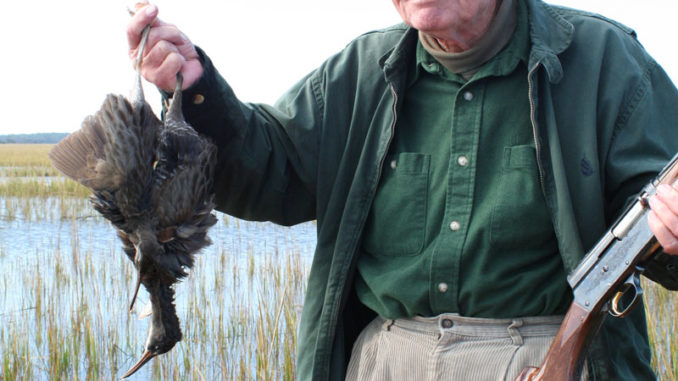
Marsh hens, preserve bobwhites provide bird hunters with plenty of opportunities around South Carolina this month.
The wait is over. After months of prepping gear, training dogs, shotgun practice and just plain suffering from bird-shooting anticipation anxiety, wing-shooting season is upon us.
It’s true that the September dove season, with its big public and private shoots, takes the edge off and, for the few goose fanatics with access to farm land where nuisance Canadas are raising havoc, there was that September season. But that weather was too hot for much dog work and really too hot for us two-legged types too. November’s cooler weather ushers in a wing shooter’s prime season, with marsh hens and preserve quail hunting.
Normally completely hidden from sight in the thick marsh grass, literally thousands of marsh hens, aka Clapper rails, have arrived, but most go unnoticed by fishermen and boaters, only occasionally confirming their presence by ranting calls. But when the super-high tides — nicknamed “marsh hen tides,” — cover all but the tallest Spartina grass, it’s game on.
Marsh hen hunting in the salt marshes of South Carolina’s Lowcountry is pretty easy with the right equipment and a little know-how. Birds are easy to hit with a shotgun, making the sport ideal for young or new hunters, but sometimes they are hard to get to.
The rules are similar to those for migratory waterfowl, requiring the forward motion of a boat under power to be ended and the motor turned off before birds may be shot. Thus, hunters can prowl flooded marshes under power looking for rails but, when they are spotted, further progress must be by pole, paddle or oars. Since poling a boat takes both a little muscle and skill, there is a learning curve and employing light, canoe-like boats or john boats is often the hunter’s choice. Unlike duck and goose hunting, lead shot is permitted because rails are not considered waterfowl but rather migratory birds like doves, woodcock and snipe.
The 70 hunting days and 15-bird bag limit on clapper rails are set by the federal framework, but good hunting days are produced by the pull of the moon, which drives enough water into the marsh to expose the secretive birds. Biologist Dean Harrigal, a waterfowl biologist for the S.C. Department of Natural Resources, is the expert in charge of recommending those dates and the other waterfowl season splits.
“I’m often asked why we can’t extend the season to include the Christmas holiday period, but we have only 70 days allocated for marsh hens, and it is important to select the days that will offer the most opportunity for successful hunts,” he said. “With marsh hens, where high water is so important, we use the tidal predictions to allocate the hunting days.”
This year, the highest predicted tides are occurring later than usual, so the season will include some of the Christmas holidays,, with the second part of the season running from oct. 25 through Dec. 27. Some of the best tides of this season are predicted for Oct. 27-31 and Nov. 25-28.
The salt marsh spartina grass that floods twice a day, every day, grows tallest near the numerous tidal streams and cuts, and that is where marsh hens hide. Referencing the readily available Savannah River measurement, normal high tides reach 6 to 7 feet above mean low water, and most lunar high tides rise about 7 ½ to 8 feet in height, leaving plenty of grass extending above the water. But in the fall when “marsh hen tides” push 8 to 9 feet of water into the marshes, it covers almost all the grass and exposes huge numbers of birds. When luck adds a favorable east wind to these flood tides, even more water comes in, but a strong west wind can hold the water out.
The best approach to a marsh hen hunt has hunters entering the marsh as the tide approaches its high, flood stage, arriving at the landing about 1½ hours before the computed high tide for the area you are hunting. In the old days before outboards, hunters rode the tide “up the hill” to high and then slid back with the falling water to their put-in spot, but now, it’s more efficient to begin hunting were the water gets deepest first, often closest to the ocean, and then work back toward the landing, taking full advantage of the high water. Once you find birds, motor slowly into an upwind or uptide position and close flushing distance with the pole.
According to bird books, Clapper rails live from Cape Cod to the Gulf coast of south Texas, are 14 to 16 inches long and inhabit only coastal salt marshes. Biologists like Harrigal say very little study exists about the migration habits of Clapper rails, but he presumes that there is some northern migration in the summer and back in the fall. Hunters’ anecdotal evidence supports many more birds being here later in the season.
Marsh hens would rather hide or swim rather than fly from approaching danger, but corralling them toward a dense clump of floating Spartina often makes them hunker down. Once within 10 or 15 feet of the hiding birds, if they don’t fly, slapping the water with the long pole often scares them into the air.
Hunts typically last two to three hours, while the water is high enough for easy poling, with the biggest tides giving you a little extra time. A good day will produce a limit in an hour or so.
Shooting marsh hens may be easy, but it’s especially satisfying when done the old-fashioned way, sliding over a flooded coastal marsh with a friend on the pole and you standing in the bow, the rising sun of a cool autumn morning at your back, an old shotgun in hand and birds nervously clustered ahead. It transports you back to when life was simpler and maybe better.
As far as the bobwhite, the season for wild birds opens Nov. 24, and several Wildlife Management Areas, along with many privately owned hunting plantations have been making strides reestablishing coveys of wild quail. Michael Hooks, small game project leader for SCDNR, said an exciting development in quail management is the newly formed SC Quail Council chaired by SCDNR’s Alvin Taylor, a coalition of state, federal and private interests to provide leadership and advocacy for the restoration of wild quail and other grassland birds. Hooks said his initial efforts focused on four small regions, possibly centered around the Webb Center, Indian Creek area, the Carolina sandhills and the Clemson and Pee Dee areas. The goal is to return sustainable populations of wild quail to major portions of public and private land and some progress is being made.
Presently, some of the best-managed public areas for quail include the Draper WMA in York County, Crackerneck WMA in Aiken County, Canal WMA in Berkeley County, Manchester State Forest in Sumter and Clarendon counties, Long Creek WMA in Oconee County, Webb, and Palachucola and Hamilton Ridge WMAs in Hampton County. Some are open only on specified days, while others are open throughout the quail season. Special drawing hunts are run occasionally at Webb and McBee WMAs. Refer to the regulations guide available at www.dnr.sc.gov.
Hunting wild quail on public land in South Carolina is kind of like chasing grouse in New England. You need to know a few places with good cover, you and a good dog need to put in some serious walking and, if you are lucky, you’ll move a couple of coveys. Fortunately, plenty of shooting preserves dot our landscape, including public shooting venues, semi-private shooting clubs and private plantations. Preserve hunts, though not real wild-bird hunting, do guarantee more live-bird contacts for introducing young dogs, finishing started dogs, introducing youngsters to wing-shooting, or just for a shooting fun.
“Put-and-take,” “early release” and early release with supplemental stocking are the ways it is done all around South Carolina, and the price of admission ranges from pretty reasonable to outrageously expensive. All three provide lots of birds, while the price tag depends mostly on the luxuriousness of the facility and amenities included. Riding a horse-drawn wagon through manicured coverts with multiple dogs and guides out front finding you coveys of “early release” quail costs a lot more than walking with a guide or working your own dog on “put-and-take” quail. Those who have experienced a wide range of preserve hunting know that the flying strength of the birds and the cover quality can be very good or not so good regardless of price.
With “put-and-take” hunting, just before a booked hunt, birds are planted for hunters and dogs to later discover. The birds, often three to five in a group, are dizzied and strategically dispersed, clustered in a nest or loosely released into thick cover that discourages them from walking off. Experienced hunters with proficient dogs sometimes opt to have their birds walked directly into cover without any dizzying for a more challenging hunt.
Hunts normally begin with a short safety review then the dogs are released to do their thing. Many hunters find watching hard-charging pointers galloping through the coverts only to freeze on the scent of a live covey and a running mate shortly freeze in a “backing” position, one of the more enjoyable aspects of hunting. Once pointed, the covey flush, unlike wild bird hunting, erupts when the guide scatters the planted birds with a kick and the cluster of birds bursts into the air.
Some outfitters hunt in very easy cover, pretty much open broom straw or grass fields, while other venues offer more challenging, widely spaced, piney woods with broom sedge and forbs, habitat where native wild quail typically flourished in those glory years past. A two gun, 30-bird hunt takes a couple of hours depending on the cover, the shooters’ acumen and number of dogs used. Depending on marksmanship, hunters can expect to kill from half to most of their released birds in “put-and-take” outings.
Even though most preserves will impress you with strong flying birds, scenic cover and excellent dog work, and the more challenging venues can approach the real thing, we know it’s not real hunting. Nonetheless, it’s really a lot of fun.
DESTINATION INFORMATION
HOW TO GET THERE — Clapper rails populate most salt marshes in the Lowcountry but do not like brackish water. Use the Chechessee River landing at the foot of the SC 170 bridge for the Broad River areas, the Sands landing in Port Royal for the Paris Island spots and Station Creek Landing on St. Helena Island for Trenchards Inlet. Many other free public landing options are available.
WHEN TO GO — Quail season on hunting preserves opens Oct. 1 and runs through March 31, but October and March hunting is limited by warm weather. The season for Clapper, Virginia and Sora rails is Oct. 25-Dec. 27, with a daily bag limit of 15. Gallinules have the same season and bag limit, and snipe season is Nov. 14-28 and the bag limit is 8. For marsh birds, key on times of extremely high tides.
HUNTING INFO/GUIDES — SCDNR regulations apply to preserve hunts, but there is no bag limit on pen-raised quail. A resident hunting license ($12) or a special hunting preserve license for residents or non-residents($8.50) is required. Most marsh hen hunting is done by private individuals, but Bay Street Outfitters in Beaufort, 843-524-5250, offers a hunting/fishing package called “Rails and Tails.”
ACCOMMODATIONS — Beaufort Area Chamber of Commerce, 843-986-5400, www.beaufortchamber.org.
MAPS — Top Spot Map N233, showing details of landings and marsh areas is available from local tackle shops.

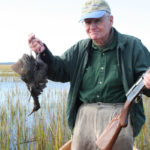
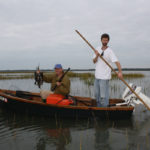
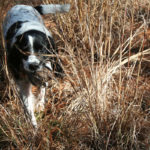
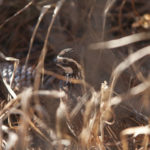


Be the first to comment